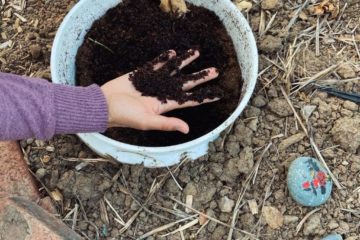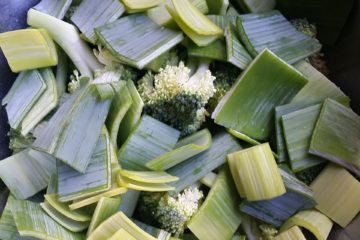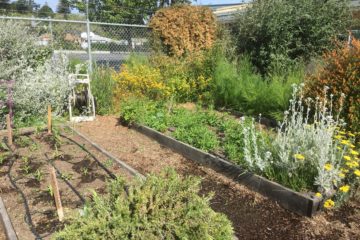Written by Emma Finklang, Grant Writing & Development
It can be disappointing to open up your fridge in search of a quick snack, only to find that your berries are moldy or your carrots rubbery. Moreover, food waste has serious impacts on the environment–for example, rotting produce in landfills releases greenhouse gas emissions–which is concerning considering it is estimated that Americans throw away a quarter of the food we buy (foodprint.org).
By applying some of the following strategies to reduce food waste, you can save money and reduce the number of trips to the grocery store, all while helping the environment.
The Basics
Some foods (bananas, tomatoes, onions, and potatoes) continue to release plant hormones even after they’ve been pulled from the ground. These hormones make them, and all the other fruits and veggies nearby, ripen much faster. This decreases the time you have to use your produce before it goes bad, so it’s best to store these foods separately.
The best way to make carrots and celery last in the fridge is to submerge them in a sealed container of water in the fridge (centerforecotechnology.org). They can last up to two weeks this way!
Berries get moldy and mushy quickly because they often go straight from the field to the store with minimal processing. To help get off some of the leftover dirt, rinse them in a mixture of 3 parts water to one part vinegar. Then, run them in cold water to get the vinegar taste out and let them dry completely before storing in the fridge.
Root vegetables should always be stored in a cool, dry place. If they have leafy tops, like radishes and carrots, make sure to cut those off so they’re not drawing moisture away from the vegetable.
Other tips & tricks
Don’t be afraid to freeze your produce! Especially if you have some extra time over the weekend, you can chop up the veggies you’re planning on using throughout the week and freeze them. Then, throw them straight in the pan when you’re ready to cook.
The crisper drawer makes a great storage area for leafy greens and apples. Fun fact: apples can last weeks or even months longer in the fridge than they can on the counter.
When produce is still safe to eat, but is starting to look less than fresh, throw it in a soup or smoothie. It’s a great way to get all the nutrients and use up multiple fruits and veggies at once.
Sources:
“Food Storage Tips to Reduce Waste” Center for Eco Technology, https://www.centerforecotechnology.org/food-storage-tips-reduce-waste/. Accessed 15 March 2021.
Sacks, Katherine. “The Best Ways to Store Fruits and Vegetables to Reduce Food Waste” FoodPrint, 30 April 2020, https://foodprint.org/blog/how-to-store-vegetables/. Accessed 15 March 2021.



0 Comments